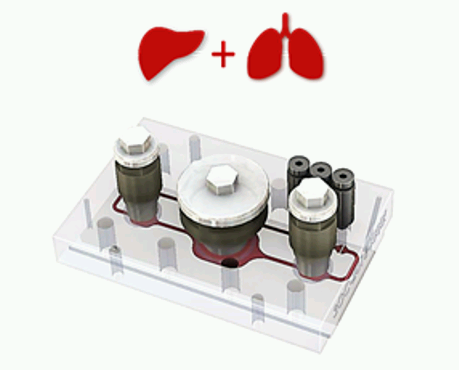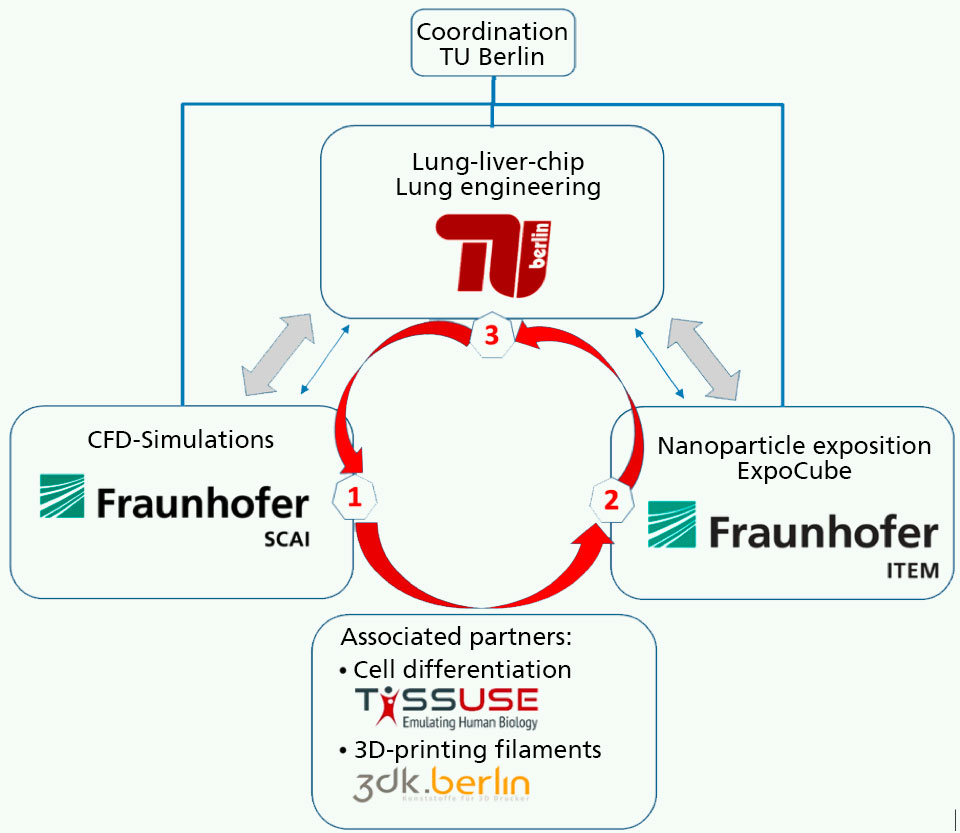BMBF NanoINHAL
In-vitro test method for airborne nanomaterials for the investigation of toxic potential and uptake after inhalative exposure using innovative organ-on-a-chip technology.
Project Background
The special material properties of nanomaterials are particularly interesting for various industrial applications, but they also raise questions about possible risks for humans. In particular, there is a lack of data on long-term effects and uptake and distribution in the organism. The lung is not only an important target organ for acute toxic effects after inhalation of airborne substances, but its barrier function also determines the uptake of the materials into the blood and/or lymphatic system and the resulting effects on other organs. Especially for inhalation, it is hardly possible to estimate the health risk of (nano)materials based on current data.
Project Goals
The aim of the NanoINHAL project is to develop an innovative testing system for investigating the toxic effects of airborne nanomaterials. A cell exposure system developed at the Fraunhofer Institute ITEM makes it possible to expose cell cultures and tissue sections to airborne substances and (nano)particles in order to investigate the interaction of the cells with the substances. The development of the exposure system was supported by Fraunhofer SCAI through numerical flow simulations (CFD). In the NanoINHAL project, SCAI will use simulation methods to characterize and optimize the flow conditions, with a focus on the transport of nanoparticles in airbourne flows. The Technical University of Berlin and the company TissUse GmbH are developing so-called organ-on-a-chip systems which allow different organ models on a chip to be simultaneously connected in a circuit and these cell and tissue models to be flowed through with medium. Such multi-organ systems keep the function of the organs stable for weeks. They are therefore suitable for use in long-term studies with repeated exposure to substances.
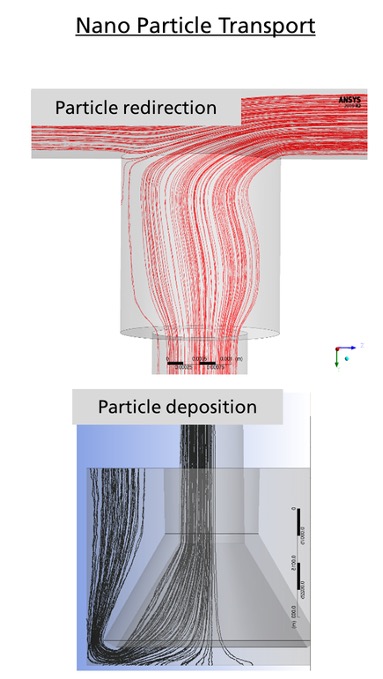
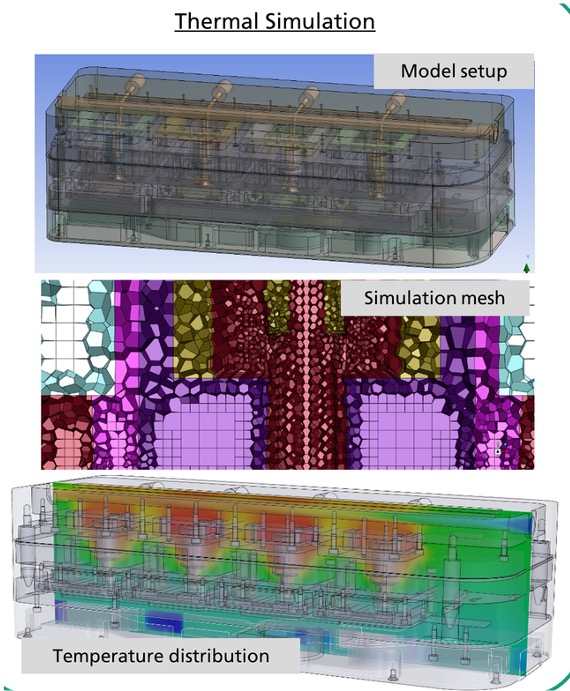
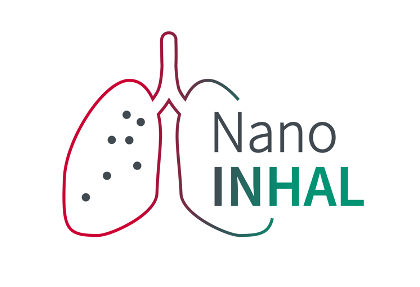
By combining the two technologies, the project aims to develop a test system that not only enables the investigation of direct effects of airborne nanomaterials on human respiratory models, but also the investigation of effects on other organs. In addition, the test system is to be tested as an example for assessing the hazard potential of (nano-)materials produced in additive manufacturing processes such as 3D printing.
Supporting NanoCube Design with Simulation
- Nano particle transport
- Consecutive approach a) fluid flow (Euler laminar), b) particle transport (Lagrange)
- Particle forces: gravitation, Brownian diffusion, Thermophoresis, Stokes-Cunningham drag
- Simulation with ANSYS Fluent with high-resolution tracking and an adequate small time-step
- Thermal simulation
- Conjugate Heat Transfer model ANSYS Fluent steady state
- Laminar aerosol flow, turbulent cooling flow
- Dissolving details of the components of the NanoCube
- Thermal boundary conditions (heating, air cooling, heat conduction and convection)
Project Status
- Prototype in test environment
Expected Solutions and Exploitation Path
- ANSYS FLUENT
- Appropriate modelling of nano particle transport concerning physical models, solver parameters and efficient parallelization
- OpenFOAM
- Implementation of necessary models concerning Stokes-Cunningham drag and thermophoresis
- Usage of already available models like Brownian diffusion
- Implementation of a efficient particle loop parallelization using OpenMP
Funding Information
NanoINHAL is funded by the German Federal Ministry of Education and Research (BMBF) within the scope of the topic Nano Safety Research: "NanoCare4.0 - Application-safe Material Innovations".
Funding ID is 03XP0226B
Project partners are Fraunhofer ITEM, TU Berlin (Associated partners: TISSUSE, 3dk.berlin)
Project duration: 06/2019 – 05/2022

